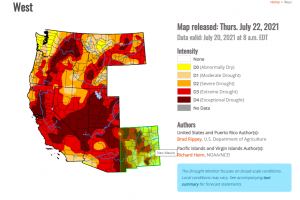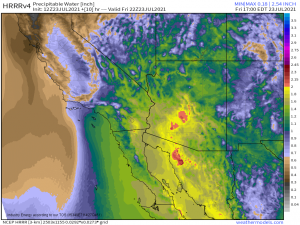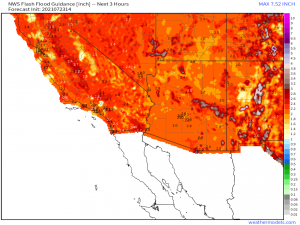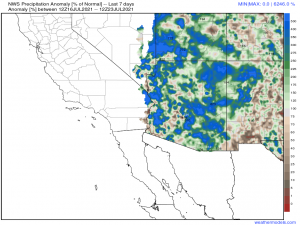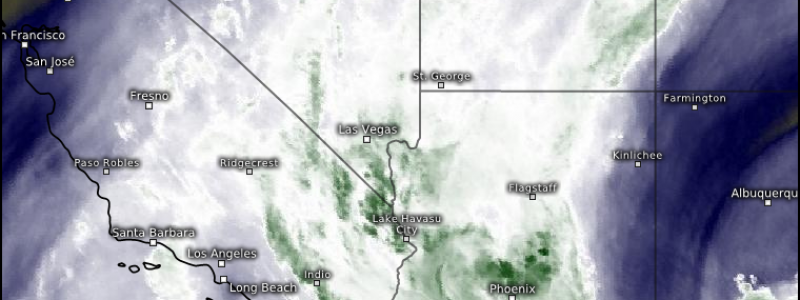
Flash Flood Risk Materializes for the Southwest
The southwest needs rain. That’s a well-known fact.
One look at drought monitor map of the southwest and the multi-year, increasing drought Jacob did a blog series about is rather evident. Thanks to monsoonal moisture, parts of this region have indeed been receiving much-needed rain recently.
Now, while any measurable rainfall will eat away at the deficit and is ultimately good, it’s helpful if it doesn’t all come at once. Why? Parched, sun-baked earth is unable to absorb a sudden influx of heavy rain. It just doesn’t penetrate the soil. Instead, sudden inundation runs off, quickly becoming flash flooding.
Today, a retrograding mid-level low will combine with the monsoonal moisture in place, increasing the threat for flash flooding.
Daytime heating enabling destabilization and the forcing from the approaching low offer the opportunity for widespread convection. These storms that form have high precipitable water values from the monsoonal moisture already in place to tap into. Sudden, intense downpours may result.
Flash Flood Guidance for the next ~3 hours indicates a rather low threshold, especially in central/southern Arizona where the highest excessive rainfall risk has been defined for today, that could easily be exceeded with one slow-moving downpour.
I mentioned that parched earth has an inability to absorb a sudden influx of water, and that’s true for parts of this region. However, as I also mentioned, the monsoon has been ongoing for at least the past week and other parts of this region have received rainfall amounts well above average.
Some even exceeding 500% of average. It’s a bit hit-or-miss, as evidenced by the map. But between parched earth, already saturated earth, burn scars, and terrain (such as deep canyons) which naturally lends to a higher flash flood risk, today could be a rather dangerous day in a decently large area in terms of flooding.
Use caution if you’re out and about in this region. Be aware of your surroundings and your location. Many storm chasers like to photograph the monsoon. Try to know ahead of time if the location you choose to shoot is more susceptible to flash flooding – for example: don’t hang out in a canyon, or really any lower-elevation surrounded by steeper terrain. And, as always, don’t drive over flooded roadways. The risk isn’t worth your life.
